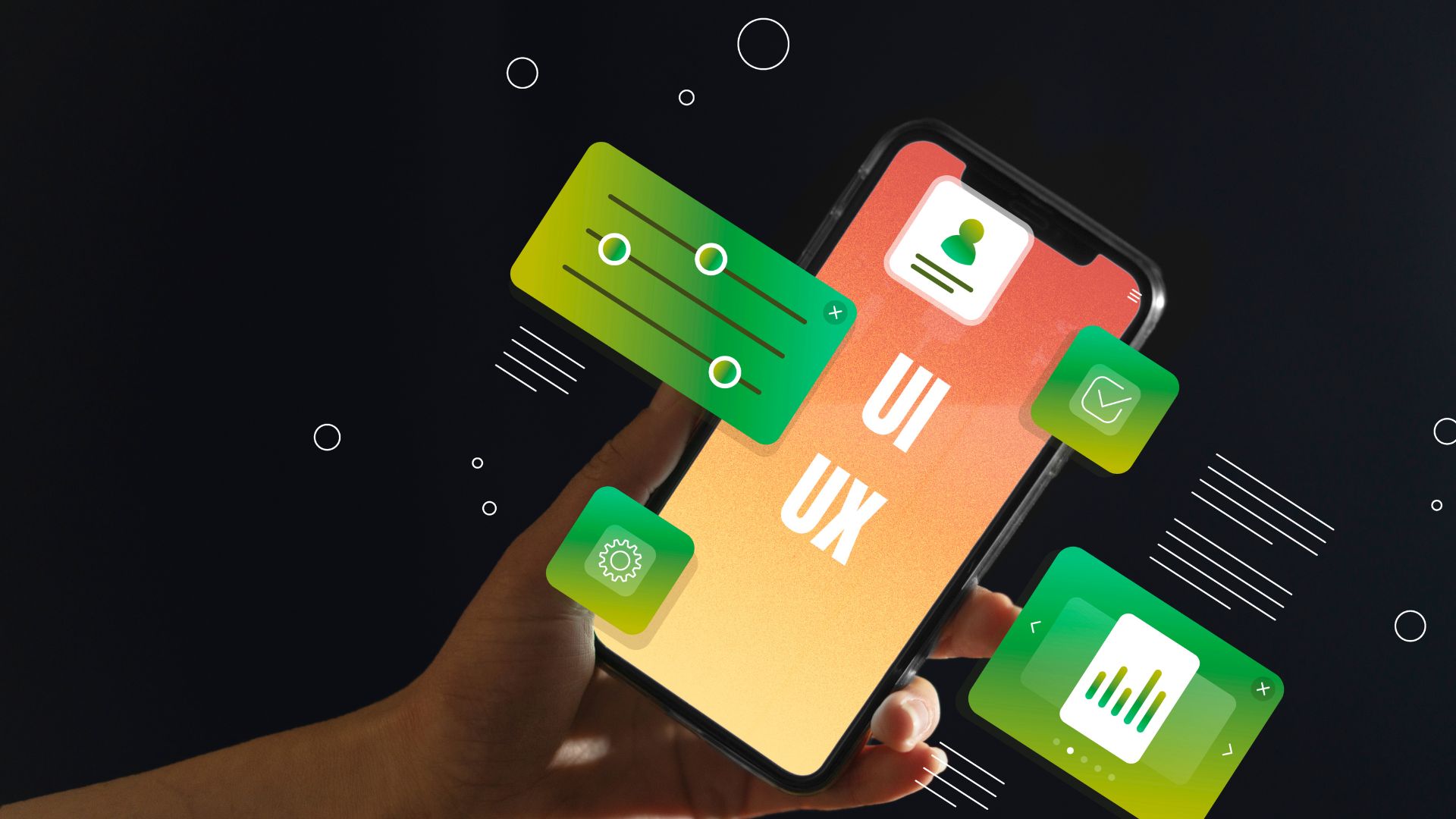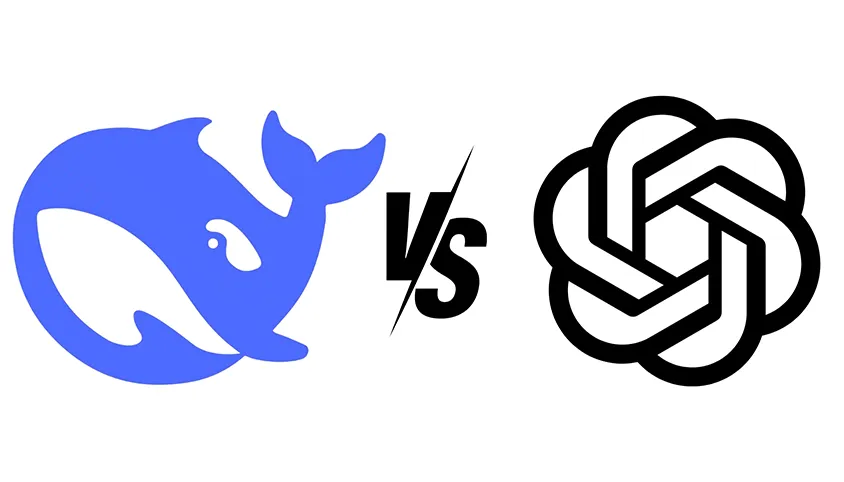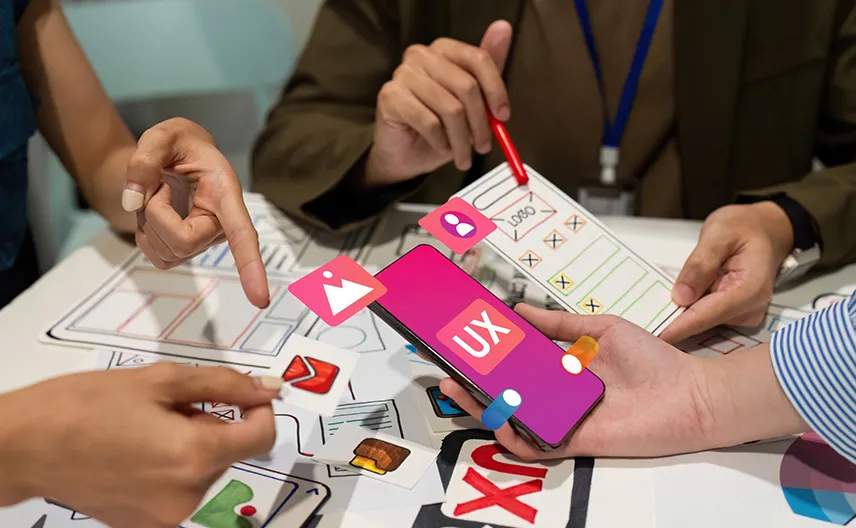-
Find Services
-
Generative AI
-
Blockchain Technology
-
Mobile App Development
-
Software Development
-
Web Development
-
E-Commerce Development
-
App Designing (UI/UX)
-
Web Designing (UI/UX)
-
IoT Development
- Industry
- Manufacturing
- Health Care
- Logistics
- Automotive
- Testing Services
- DevOps
- Game Development
- Robotic Process Automation
- AR & VR Development
- Browse All Services
-
Generative AI
-
Find Agencies
- Submit Reviews
- Research & Surveys

Today, with the speed at which digital is evolving, UI/UX design has become vital in app development. The growing advancement of technology and users’ increasing expectations call for more exciting experiences, pushing designers into uncharted territories to explore innovative ideas for more intuitive experiences. So, let’s look at what is coming up for UI/UX in app design and trends to watch.
1. Immersive Visual Storytelling
Visual storytelling will become an integral part of modern app design. Compelling narratives through visuals can make one stay connected with users emotionally. For example, interactive animations and micro-interactions can smoothly guide users while making the experience memorable. Elements of custom illustrations, dynamic transitions, and motion graphics transform an app into a visual journey.
It matters because of following reasons:-
- It creates an emotional connection on the user’s side.
- It enhances brand identity.
- It encourages longer app sessions and better retention.
2. Personalization using AI and ML
Personalization is still reigning in the app design trends. Through AI and ML, apps are now able to provide users with experiences that cater to their behavioural and preference levels. From recommendations of content, to dynamically changing interfaces, the trend has become a usability relevance enhancer.
Applications are mentioned as follow:-
- Product suggestion based on e-commerce browsing history.
- Personalized workout plans are offered by fitness apps.
- News articles curated by an app based on user interest.
3. Voice and Gesture Control Interfaces
As technology becomes an integral part of our lives, hands-free interaction is becoming more important. Voice-controlled interfaces and gesture-based navigation are changing the way users interact with apps, providing seamless, intuitive experiences.
Emerging trends in this space include:
- Apps with natural language processing capabilities for better voice recognition.
- Gesture controls for gaming and productivity apps.
- This trend not only aligns with accessibility goals but also enhances multitasking capabilities, making apps more versatile and inclusive.
4. Rise of Super Apps
Super apps, which combine multiple services into one platform, are reshaping user expectations. These apps act as ecosystems where users can shop, communicate, book services, and even pay bills. By focusing on intuitive navigation and seamless transitions between services, designers are pushing UI/UX innovation to new heights.
Examples:
- WeChat, which allows for messaging, payments, and social networking.
- Gojek, which provides ride-hailing, food delivery, and financial services.
5. Dark Mode Design
Dark mode has moved beyond being just a preference to becoming a key design consideration. Not only does it reduce eye strain, but it also offers an elegant aesthetic that enhances visual appeal. Designers are now focusing on creating dark mode experiences that don’t compromise usability.
Best practices for dark mode design:
- Maintaining colour contrast for readability.
- Adopting subtle gradients and textures.
- Using dynamic theming to adapt based on user preference.
6. Augmented Reality (AR) Integration
AR is no longer limited to gaming; it is rapidly finding applications across industries, from retail to healthcare. By integrating AR into apps, designers can offer interactive, immersive experiences that add tangible value.
Key examples:
- Virtual try-ons in fashion and beauty apps.
- Real-time navigation using AR overlays.
- Educational apps providing interactive AR modules.
Impact on UI/UX:
- Makes apps more engaging and interactive.
- Provides users with practical, real-world applications of technology.
7. Minimalist Aesthetics and Functional Design
Minimalism in UI/UX design is evolving into a blend of aesthetics and functionality. By decluttering interfaces and emphasizing essential elements, designers aim to reduce cognitive load and improve usability. Functional minimalism ensures that every design element serves a purpose.
Features of minimalist design:
- Simplified navigation menus.
- Crisp typography and ample white space.
- Iconography that replaces redundant text.
8. Focus on Sustainability and Ethical Design
As users become more environmentally conscious, apps are integrating sustainability into their designs. Features like carbon footprint trackers or eco-friendly tips not only align with user values but also differentiate apps in a crowded marketplace.
Examples of ethical design in apps:
- Designing apps that consume less energy.
- Highlighting sustainable products or services.
- Transparent data usage policies to protect user privacy.
9. Advanced Prototyping and Collaboration Tools
The tools used by UI/UX designers are also evolving, enabling faster iterations and better collaboration. Platforms like Figma and Adobe XD are introducing features that allow for real-time collaboration, streamlining the design and development process.
Why this matters:
- Reduces time-to-market for apps.
- Improves communication between design and development teams.
- Encourages iterative testing and refinement.
10. Accessibility as a Priority
Accessibility is no longer an afterthought in app design; it is becoming a fundamental aspect of the design process. From voice-over compatibility to screen reader-friendly layouts, apps are prioritizing inclusivity to reach a broader audience.
Features to include:
- Adjustable font sizes and color contrast.
- Keyboard navigation for users with mobility challenges.
- Detailed alt text for images and interactive elements.
11. Gamification in App Design
Gamification remains a powerful tool for boosting user engagement. By integrating elements like rewards, leaderboards, and challenges, apps can motivate users to achieve goals while making the experience enjoyable.
Applications:
- Health apps encouraging users to meet fitness goals.
- Educational apps promoting skill development through interactive modules.
Conclusion
The future of UI/UX in app design is brimming with possibilities. From immersive visual storytelling to AI-driven personalization and AR integration, the trends discussed here highlight how innovation is shaping the next generation of apps. As designers continue to explore new avenues, the focus remains on creating experiences that are not only functional but also emotionally resonant.
By staying ahead of these trends and integrating them thoughtfully, businesses can craft apps that stand out in an increasingly competitive market. Whether it’s through interactive apps, ethical design, or the use of advanced tools, the opportunities for UI/UX innovation are endless—and the journey is just beginning.







